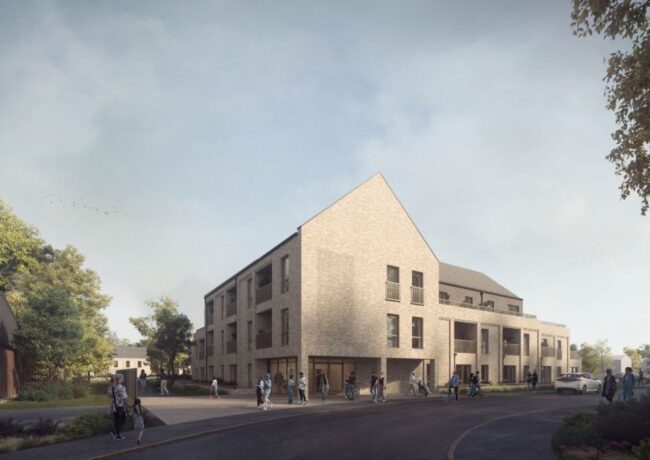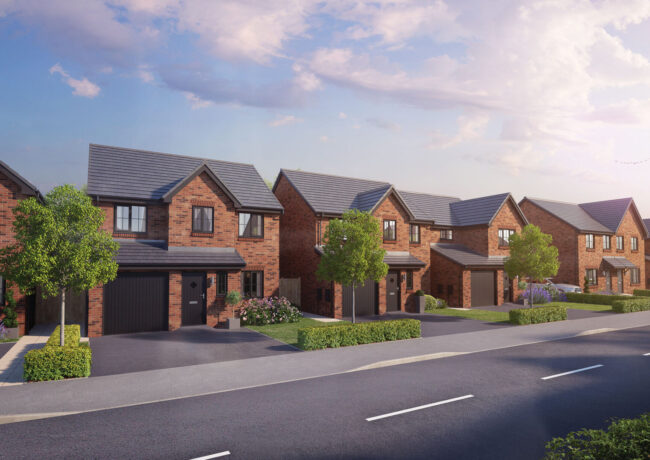Jones wants brownfield first policy
Cheshire East Council leader Michael Jones has called for a renewal of the brownfield first policy to protect Cheshire East's green fields.
Cllr Jones said in a statement: "Cheshire East is a green and pleasant land, it is for this reason that developers see Cheshire East as the most desirable place to build and sell houses, and I understand and fully support the strong community desire to keep it this way.
"However, development is a necessary reality if we are to keep Cheshire East a desirable and economically-vibrant place to live and work. It is heartening to note that a common trend emerging through the draft development strategy is that residents recognise too that we must grow in order to thrive.
"By far the main theme developing in the comments we have received is that people want to see redevelopment of brownfield sites. I agree and wholly support this view, which is why I am calling for a renewal of this policy and for all brownfield sites that can be developed on, be brought forward as quickly as possible.
"This ongoing consultation has been very successful and has given us a clear view of what the people of Cheshire East want for the future. They have made their views plain and the council is listening, which is why I am calling for the renewal of our Brownfield First policy.
"For every 12 houses built on brownfield land, one acre of greenfield is saved. That is a clear fact and one we must bear in mind at all times.
"Developing greenfield sites can be seen by developers as the easy option. Cheshire East does not support this approach, and our draft development strategy proposes greenfield swaps and a wider green space strategy underlining our commitment to greenfield development.
"Time and time again I hear from residents that there is more brownfield land available, and I want to make it very clear that we support the development of these brownfield sites. This is land which has previously been used for any purpose but is no longer in use or is underused. If people can find enough brownfield sites, Cheshire East will support no development in green spaces.
"This is a collective responsibility, for all of us to look for opportunities for developing on brownfield first. I know this isn't always easy, but we are here to help. If you have sites and plans but are facing constraints in developing them – let us know. We won't always have the answer, but together we can find a way.
"To date we have identified brownfield areas that will equate to 7,000 new houses. However, we know there will be more sites out there. Whilst these figures show that we have made good progress, our area is changing all the time and we need to work together to identify more sites as they become available.
"Protecting the greenfields of Cheshire East is a number one priority for me, and I will stand by that commitment."
The draft development strategy document is available to view on the Cheshire East Council website with a feedback questionnaire.
The development strategy document is also available to view at Cheshire East libraries, or by visiting the council's Delamere House in Crewe, Macclesfield Town Hall, or the council's offices at Westfields in Sandbach.
The local plan consultation ends on 26 February 2013.





Lets just bang a big railway line through it instead.
By Nimby
Lets see developers forced to produce schemes of decent densities too – and of high design quality.
By Heloise Wood
I think it is unrealistic in the extreme to think that Cheshire East’s housing requirements can be met by brownfield land. The population is growing and local authorities need housing to meet their wider economic goals. NIMBYISM has to get real!
By NT
I agree with NT’s comment, and it is wholly unrealistic for more than a small proportion of Cheshire East’s housing needs to be met through brownfield development. In fact, one of the ways in which we can solve the North West’s housing shortage (bearing in mind that the housing completion rate in the North West since 2008 has plummeted faster than in any other region) is to increase the supply of easy to develop greenfield sites in urban edge locations.
The region has been far too reliant on difficult to develop brownfield housing sites – 83% of completions over the past 20 years, compared to around 74% for England as a whole – which has led to high density, poor quality housing which is nevertheless too expensive.
Mike’s PNW blog on the housing shortage in the North West provides thoughts on what needs to be done in order to improve housing completions in the region:
https://www.placenorthwest.co.uk/problem-dwelling.html
By Holliss Vincent
Unfortunatly Mr Jones has no clue what hes talking about and giving his vacuious biased opinions any coverage is not worthy of what is otherwise a useful service that your articles usually provide. The simple facts are there is a shortage of housing which cannot be met by “brownfield sites” many of which are not viable to bring forward and the economy is flat lining. Construction output is down and millions of voters relay on the industry for their jobs. Its not that difficult to realise we need to stop worrying about the nimby minority is it?
By RH
I couldn’t disagree more with the previous two comments. It is not the planning system that is broken here. As I see it, all the Council is trying to do, quite rightly, is strike a balance between demand for housing and protecting the very amenities that attract people there in the first place; as well point out that the costs of the infrastructure needed to service all this new development is not, in the main, borne by the developers of these new estates – it largely comes from the public purse.
The people that live in these new settlements do not generally work or socialise in the same places, – many commute to Manchester, Warrington, Chester or Liverpool. What we need therefore is a new approach that can create high quality places in urban areas that can absorb the pent up demand. Unfortunately dis-empowered, impoverished Councils and rapacious developers with a short term horizon cannot possibly hope to remedy the situation.
The problem therefore is not the planning system but it is the high-margin, low-risk, short-term business model operated by the house builders. This results in not only the smallest housing in Europe but poor quality, poorly served places built in locations that are far from economic centres.
Most of the volume house builders’ profit is made on the uplift in the value of land. Thus they direct their capital to acquiring and banking cheap, easy to develop greenfield sites rather than taking a long term view, creating value by developing really high quality places on more challenging and sustainable brownfield sites. No wonder then that when that same flawed business model is applied to brownfield sites it again produces only small, low quality units and place-making is largely absent. These are the critical points that the recent blog posting completely omitted (somewhat understandable given the author’s likely client base).
What we should be doing is asking why in places like Europe, they manage to produce high quality, high density urban housing that attracts a wide spectrum of the income range. Apart from the usual stigma directed towards urban areas in the UK, a big reason is that the function of house construction is largely separate from land trading in the European model. Their developers and public agencies also work together to focus on PLACE MAKING rather than merely house building. Thus they manage a sensible integration of physical, social and economic interests rather than the poisonous mix of conflict, vested interest and inertia that characterises the situation in this country.
By Reform the Industry